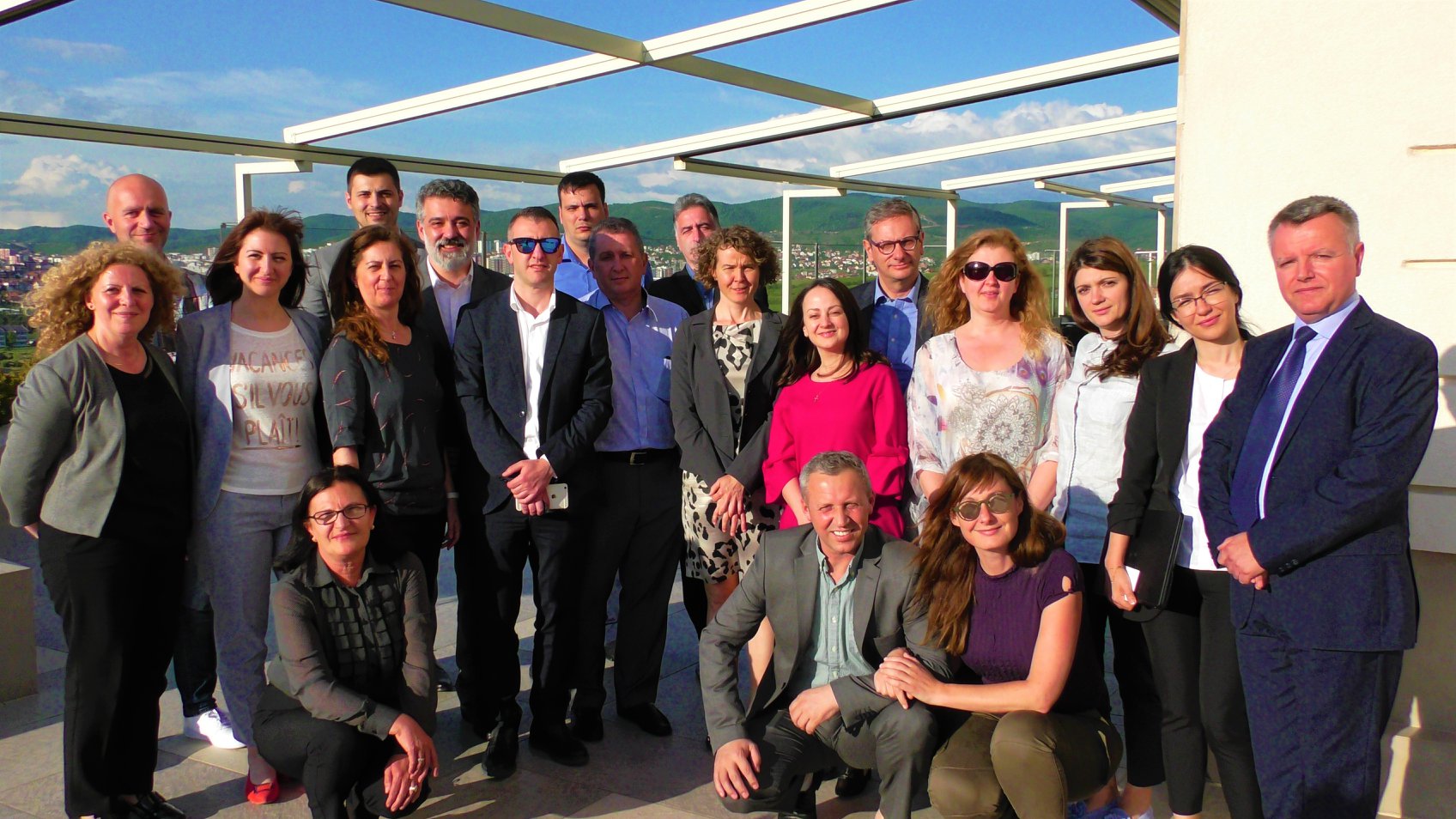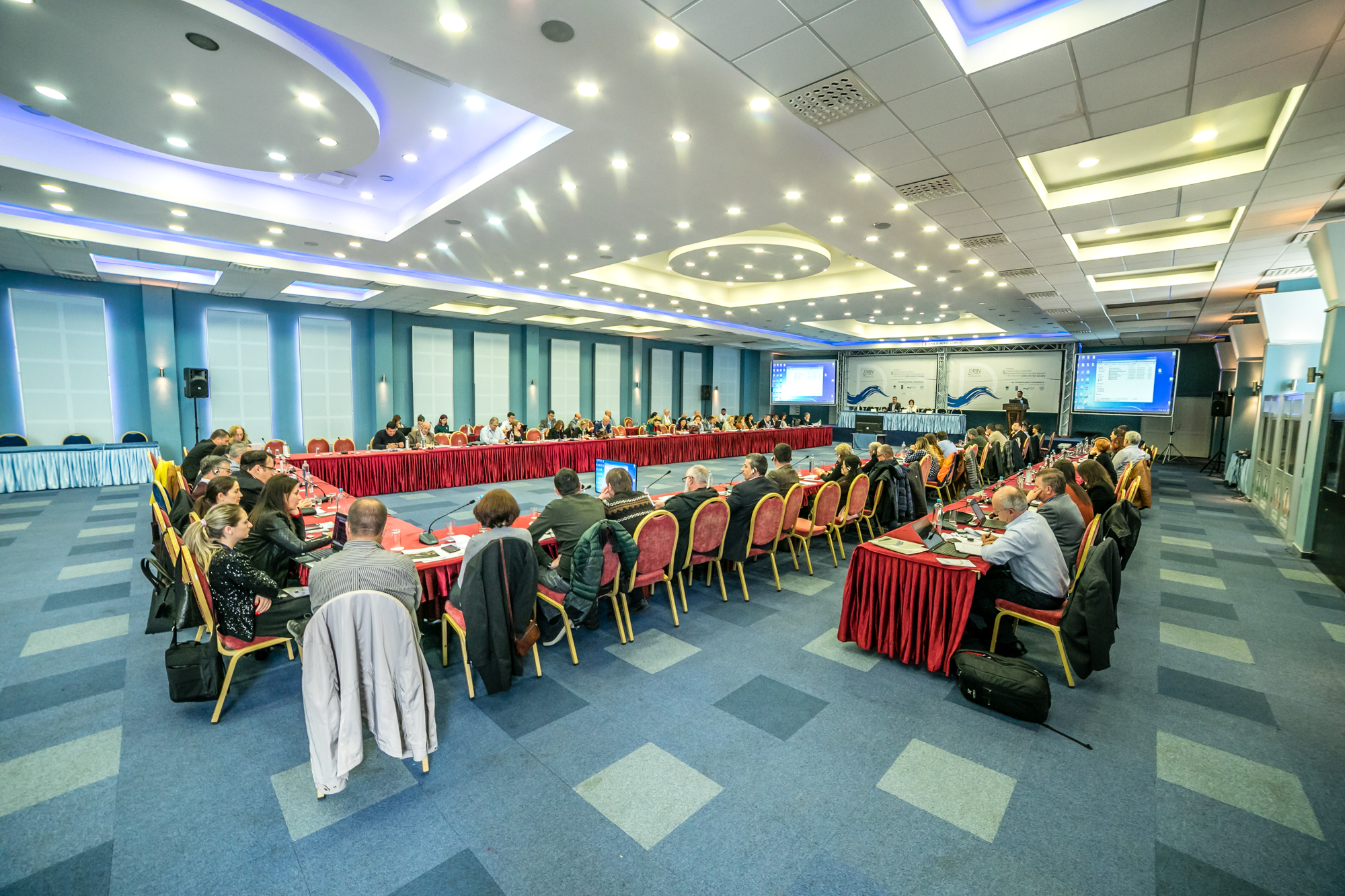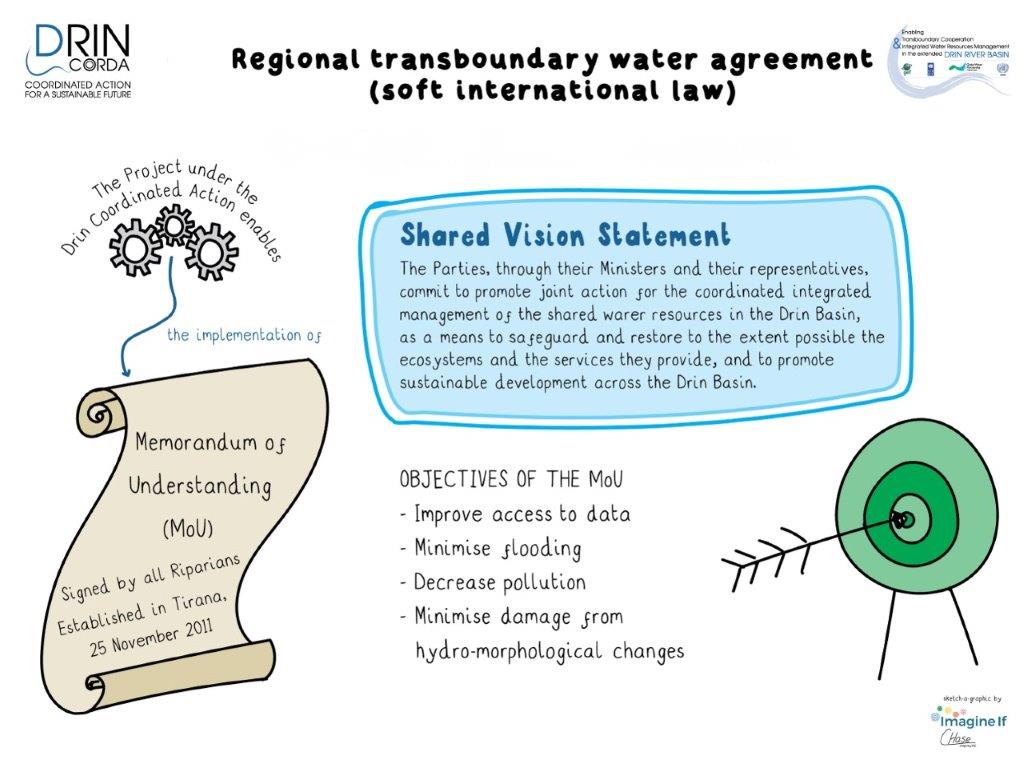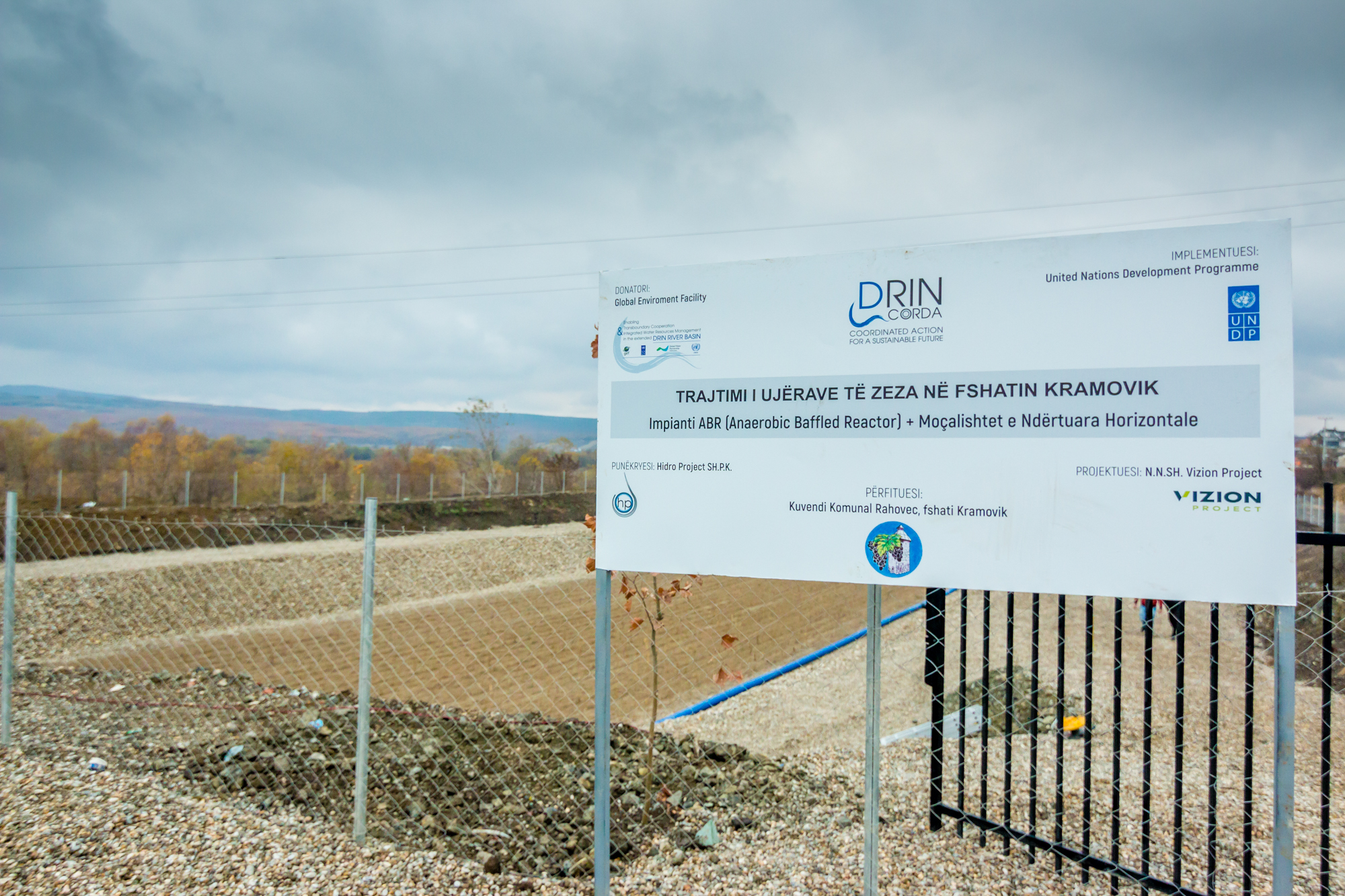Transboundary cooperation in the Drin basin was institutionalized in 2011 through the signing of a related Memorandum of Understanding (Tirana, 25 November 2011) by the Ministers of the water and environment management competent ministries of Albania, Kosovo*, North Macedonia, Montenegro and Greece.
The GEF Drin Project resulted in the joint body established through the Drin MoU, the Drin Core Group, to become fully operational, the development and adoption of the Transboundary Diagnostic Analysis (TDA) and the endorsement of the Strategic Action Programme (SAP) at ministerial level. Further, concrete steps were made for the development and negotiation of an international agreement for the management of the Drin Basin. All of these constitute a firm technical and institutional basis for action towards the sustainable management of water uses and addressing the causes of transboundary problems in the Basin. The Drin SAP operationalizes the Drin MoU, and constitutes the plan of action for the full achievement of the MoU’s aims and objectives. All actions and results were underscored by a high level of stakeholder engagement and ownership.
So, what are the 5 key takeaways on how the GEF Drin Project managed to catalyse action towards transboundary cooperation among the five Riparians to save their common natural treasure?
1) Building on the authority of a joint political body: Established in 2008, the Drin Core Group (DCG), is comprised of representatives of the Drin Riparians with the mandate “to promote joint action for the coordinated integrated management of the shared water resources in the Drin Basin, as a means to safeguard and restore to the extent possible the ecosystems and the services they provide, and to promote sustainable development across the Drin Basin” (Drin MoU; Tirana, 21 November 2011). The DCG became also the Steering Committee of the Project.
 17th Drin Core Group meeting
17th Drin Core Group meeting
Having the joint body as the steering committee was a key factor of success. It allowed the countries to have full control of the project’s implementation, increased trust among them and led to increased capacities for transboundary cooperation. The project was the means to implement the Drin MoU; by guiding it, the DCG gained the experience in coordinating actions for the implementation of the Drin MoU hence, the actions for the management of the Drin Basin. Further, a culture of cooperation was cultivated. As a result of this work the DCG became the forum to discuss and seek solutions for transboundary problems in sub-basins.
In the absence of a joint body a project should strive to establish a steering committee and “transforming” this into a joint body. The project may be able to use the joint implementation of transboundary actions as means to forge trust among states and build capacities for transboundary cooperation, paving the way for the establishment of a formal joint body.
2) A decentralised Project Management Unit (PMU): A decentralized PMU was set up, with a dedicated project officer for each country. The officers had daily contacts with local stakeholders, listened to their problems and worked together with them to identify feasible solutions. This was key in swiftly addressing unexpected changes in the project’s environment, such as political events, economic crises and the pandemic. The officers supported the DCG in its work and implemented the GEF Drin Project’s activities on the ground.
 Meeting of the Project Team with the Albanian Water Resources Management Agency in Tirana
Meeting of the Project Team with the Albanian Water Resources Management Agency in Tirana
3) Effective communication and stakeholder engagement: At the very start of the project, a full-fledged and detailed stakeholder analysis was undertaken, providing the basis for a strategic communication and engagement plan that analysed which stakeholders were to be informed, with what tools and at which point in time. Throughout the implementation of the project, stakeholders participated in all consultations, provided input and were informed about all on-going and planned activities. The result was a strong stakeholders’ sense of ownership of the project and its outcomes; this was a crucial element that brought agreement on the SAP. The project managed to raise awareness on critical water resources problems in the region as well as to raise capacities in terms of addressing these problems.
 6th Stakeholders Conference
6th Stakeholders Conference
4) Simple and achievable project design – alignment with national priorities: Design simplicity is an essential prerequisite for the successful implementation of such a project. The Project was designed in line with the content of the Drin MoU with an aim to enable its implementation. The outcomes and outputs while designed to address transboundary issues, were aligned with national priorities. This kept the interest even of stakeholders that were reluctant -at the beginning of the project implementation- towards transboundary cooperation. By doing this, the likelihood of achieving replication effects increased.
 Simple and Achievable Design in line with the content of the Drin MoU ( © Imagine IF)
Simple and Achievable Design in line with the content of the Drin MoU ( © Imagine IF)
5) Impactful pilot demonstration activities: As part of the GEF Drin Project, a number of Pilot Demonstration activities, designed to address transboundary issues, were implemented. These allowed stakeholders to have first-hand experience of technologies, practices and organizational settings novel to the region, allowing them to test their cost effectiveness and feasibility in the regional context, and ultimately feed into the SAP formulation process. These activities, achieving tangible results, raised the interest of stakeholders who were actively engaged in their implementation, and presented clear benefits that in turn ensured increasing engagement by the political leadership.
 The Constructed Wetland Pilot Activity in the Kramovik village in Kosovo
The Constructed Wetland Pilot Activity in the Kramovik village in Kosovo
Conclusion:
The Drin MoU being in place, the Drin Core Group and its Expert Working Groups becoming fully operational, the TDA being developed and adopted, the SAP endorsed at ministerial level, and concrete steps for the negotiation of an international agreement for the management of the Drin Basin being planned, all of these, are the main Project results. They constitute a firm technical and institutional basis for action towards sustainable management of water uses and addressing the causes of transboundary problems in the Basin.
The Drin SAP operationalizes the Drin MoU and constitutes the plan of action for the full achievement of the MoU’s aims and objectives. All activities and results were underscored by a high level of stakeholder engagement and commitment.
All these were made possible due to the high level of ownership achieved among the Riparians and the water users being the result of a “mechanism” whereby stakeholders of all levels, were at the heart of the project’s implementation, provided input and were updated on its progress while ensuring that Riparians maintained control over all decisions. Common ground was provided for developing trust and working together for the sustainable management of the Drin Basin.
For more visit the website www.drincorda.org
* This designation is without prejudice to positions on status, and is in line with UNSCR 1244/1999 and the ICJ Opinion on the Kosovo declaration of independence.
This article first appeared in the GEF Portfolio News Bulletin.
